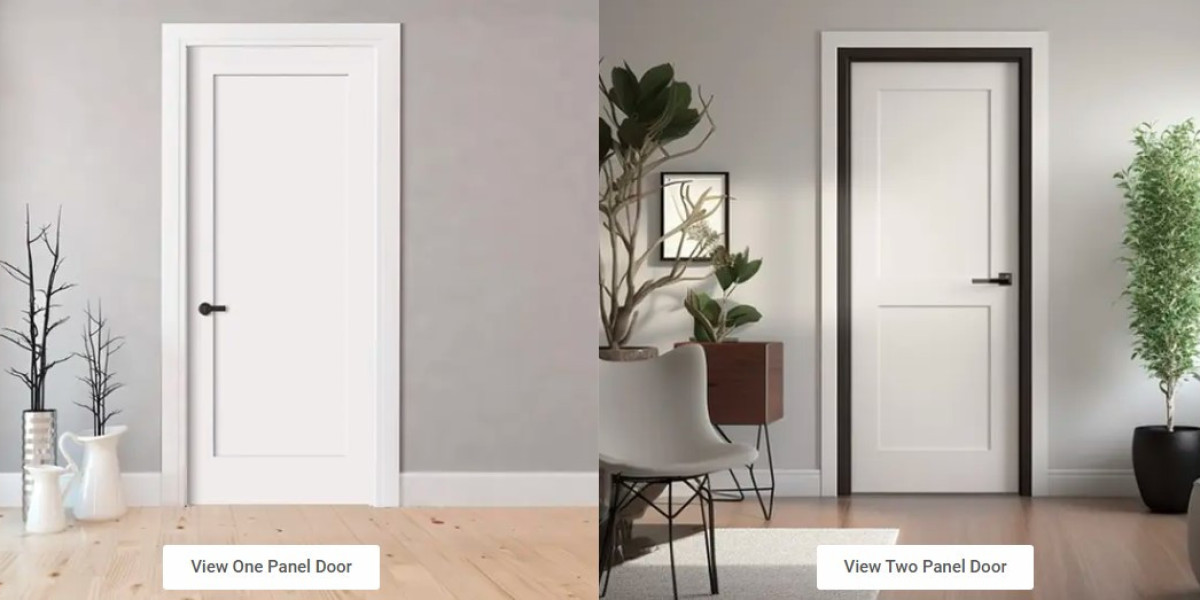When it comes to home design and functionality, interior doors play a crucial role. They provide privacy, enhance aesthetics, and contribute to the overall flow of your home. Among the various types of interior doors available, prehung interior doors have gained popularity due to their ease of installation and professional finish.
In this comprehensive guide, we’ll explore everything you need to know about interior doors and prehung interior doors, including their types, materials, installation process, and key considerations when choosing the right door for your home.
1. What Are Interior Doors?
Interior doors are doors installed inside a home to separate rooms, provide privacy, and improve sound insulation. Unlike exterior doors, which are designed for security and weather resistance, interior doors focus more on style, functionality, and space division.
Types of Interior Doors
There are several types of interior doors, each serving different purposes:
A. Panel Doors
Feature raised or recessed panels.
Classic and versatile, suitable for traditional and modern homes.
Available in 2-panel, 4-panel, or 6-panel designs.
B. Flush Doors
Smooth, flat surfaces without panels.
Minimalist and modern look.
Often used in contemporary homes.
C. French Doors
Feature glass panels to allow natural light.
Ideal for dining rooms, offices, or closets.
Enhance an open, airy feel.
D. Barn Doors
Sliding doors mounted on a track.
Save space in small rooms.
Rustic or industrial aesthetic.
E. Pocket Doors
Slide into a wall cavity.
Perfect for tight spaces where swinging doors aren’t practical.
F. Bifold Doors
Fold in half to open.
Commonly used for closets and laundry rooms.
2. Materials Used for Interior Doors
The material of an interior door affects its durability, soundproofing, and appearance. Common materials include:
A. Solid Wood
High-end, durable, and elegant.
Can be stained or painted.
Expensive but long-lasting.
B. Hollow Core
Lightweight and affordable.
Made with a honeycomb interior.
Less soundproof than solid doors.
C. Solid Core
Heavier than hollow core, with better sound insulation.
Made from composite wood or MDF.
More durable and resistant to warping.
D. MDF (Medium-Density Fiberboard)
Smooth finish, ideal for painting.
Resistant to moisture and warping.
Budget-friendly alternative to solid wood.
E. Glass-Panel Doors
Allow light to pass through.
Great for offices or rooms needing brightness.
Can be frosted for privacy.
3. What Are Prehung Interior Doors?
A prehung interior door comes already mounted on a frame (jamb) with hinges attached. Unlike a slab door (just the door itself), a prehung door includes everything needed for installation, making it a convenient choice for homeowners and contractors.
Components of a Prehung Door
Door slab – The actual door.
Door jamb – The frame that holds the door.
Hinges – Usually pre-installed (typically 3 hinges).
Door stop – The trim that prevents the door from swinging too far.
Pre-cut strike plate recess – For the door latch.
Advantages of Prehung Doors
✅ Faster Installation – No need to build a frame from scratch.
✅ Professional Finish – Ensures proper alignment and smooth operation.
✅ Includes All Necessary Hardware – Hinges, frame, and sometimes even the door knob holes are pre-drilled.
✅ Better Fit – Reduces gaps and misalignment issues.
Disadvantages of Prehung Doors
❌ Heavier & Bulkier – Harder to transport and maneuver.
❌ More Expensive – Costs more than slab doors.
❌ Limited Customization – Sizes and styles are pre-set.
4. Prehung vs. Slab Doors: Which One Should You Choose?
| Feature | Prehung Door | Slab Door |
|---|---|---|
| Installation | Easier, comes with frame | Requires separate frame |
| Cost | More expensive | More affordable |
| Customization | Limited | More flexible (can be cut to size) |
| Best For | New construction, renovations | Replacing existing doors without changing frame |
Choose a Prehung Door If:
You’re installing a door in a new opening.
You want a hassle-free, professional installation.
Your existing frame is damaged or outdated.
Choose a Slab Door If:
You’re replacing an old door but keeping the frame.
You need a custom-sized or unique door.
You’re on a tight budget.
5. How to Install a Prehung Interior Door
Step 1: Measure the Rough Opening
Ensure the opening is 2 inches wider and taller than the door size (e.g., a 30” door needs a 32” opening).
Step 2: Position the Door
Place the prehung door into the opening and check for level.
Step 3: Shim and Secure
Use shims to adjust alignment.
Nail or screw the frame into place.
Step 4: Test the Door Swing
Ensure the door opens and closes smoothly.
Step 5: Add Trim & Finish
Install casing (trim) around the frame.
Caulk and paint for a polished look.
6. Choosing the Right Interior Door for Your Home
A. Consider the Room’s Function
Bedrooms & Bathrooms – Solid core or solid wood for privacy.
Closets & Laundry Rooms – Bifold or sliding doors to save space.
Living Areas – French or glass-panel doors for an open feel.
B. Match Your Home’s Style
Traditional Homes – Panel doors with wood stains.
Modern Homes – Flush or minimalist designs.
Rustic/Farmhouse – Barn or shaker-style doors.
C. Budget & Maintenance
Solid wood is luxurious but requires upkeep.
MDF and hollow core are budget-friendly and low-maintenance.
7. Final Thoughts
Interior doors are more than just functional elements—they contribute to your home’s style, privacy, and flow. Prehung interior doors simplify installation, making them ideal for renovations and new construction. Whether you choose a panel door, French door, or sliding barn door, the right interior door can elevate your home’s design and functionality.
Before making a decision, consider:
✔ Room requirements (privacy, space, light)
✔ Material durability (solid wood vs. MDF)
✔ Installation method (prehung vs. slab)
By understanding these factors, you can select the perfect interior door for your home!








